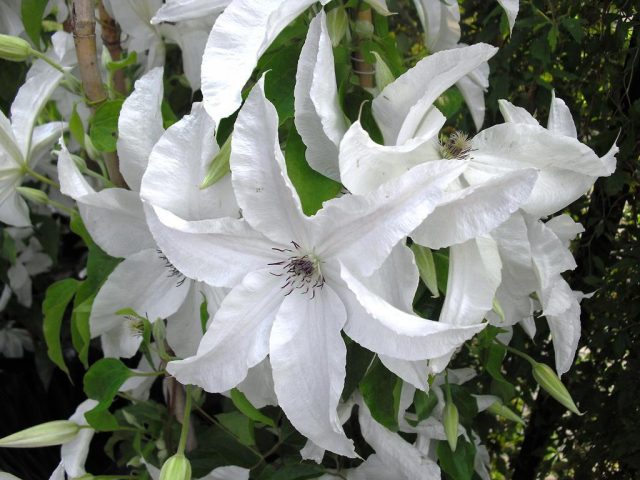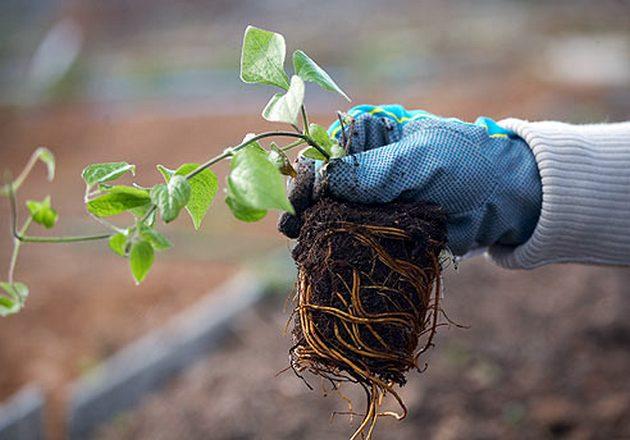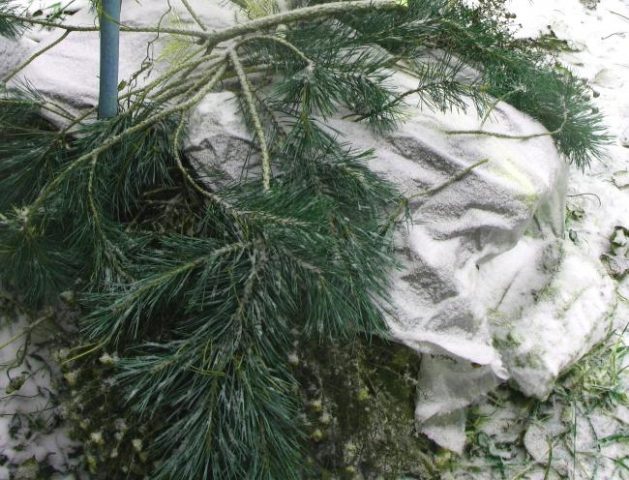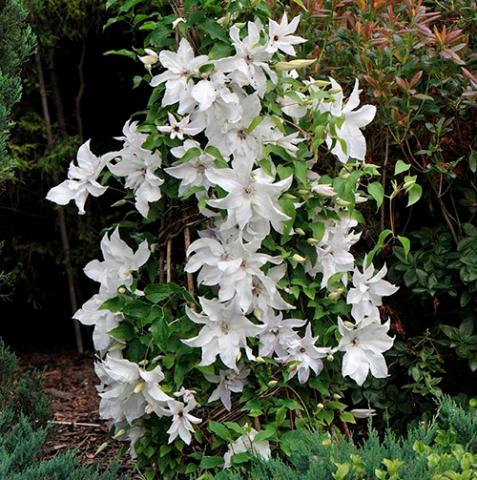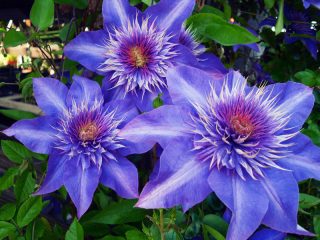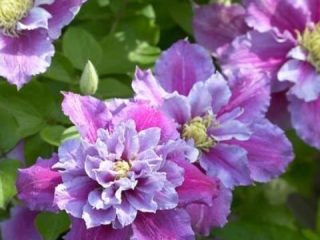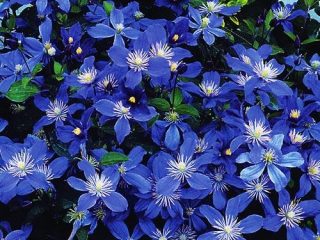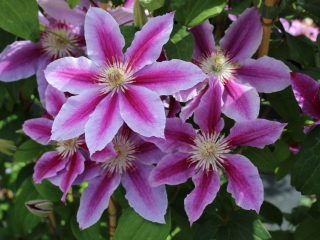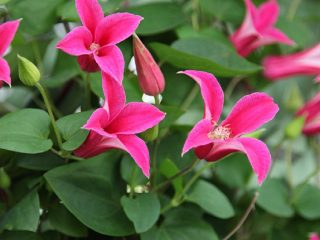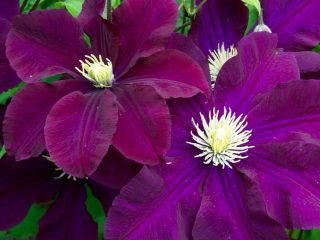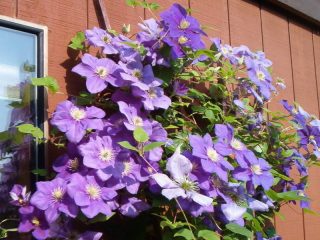Content
Although clematis Beautyful Bride was developed relatively recently, in 2011, it has won the hearts of gardeners around the world thanks to its strikingly beautiful flowers. It may seem that such a fragile plant, at first glance, is difficult to grow, but with the right approach, even novice gardeners can do it.
Description of clematis Beautyful Bride
Beautyful Bride translated from English means “beautiful bride,” which fully justifies the poetic name of clematis. It has very large snow-white flowers with a diameter of 20 - 25 cm, which cover the bush from base to top, creating the illusion of a lush wedding dress. The largest flowers, however, grow close to the ground, where the branches are older. When conceived, the bush grows no higher than 1.5 m, but in some cases it can reach a height of 2 - 3 m.
The clematis flower of the Beautyful Bride variety itself has wide petals with wavy edges that gradually taper towards the end, as can be seen in the photo. The flowering of a plant can be divided into 2 stages:
- previously;
- later.
Earlier flowering is transient and occurs at the end of May - beginning of June.At this time, flowers appear on last year's shoots and look larger.
Late flowering covers the period from mid-summer to the end of September. Flowers are formed on young shoots and are characterized by a slightly smaller size, but their number increases significantly.
Conditions for growing clematis Beautyful Bride
Clematis Beautyful Bride, despite its delicate appearance, is considered a rather unpretentious plant. It is not too picky about soil composition and grows well both in open ground and in large planting containers. This variety is often used for vertical gardening of various fences, gazebos and isolated garden supports.
To create optimal growing conditions for clematis of the Beautyful Bride variety, you should give preference to slightly shaded areas and ensure that the plant is not exposed to direct sunlight. In addition, the variety must be protected from drafts whenever possible. Otherwise, the process of growing this variety of clematis will not cause the gardener much trouble.
Planting and caring for hybrid clematis Beautyful Bride
Since clematis of the Beautyful Bride variety can grow in one place for 20 - 25 years, you should carefully consider the choice of planting site. So, the most favorable soil for this plant will be a mixture of fertile sandy loam and loose loamy soil. In this case, the acidity of the soil can vary from 6 to 7 pH.
Having decided on the location of the seat, you can start planting the plant:
- The size of the planting hole must be at least 60x60 cm.
- Clematis should be placed 70 - 100 cm away from other plants.
- It is necessary to place gravel or other drainage at the bottom of the depression, and then sprinkle it with a layer of humus and compost.
- Upon completion of planting, the soil must be watered and loosened generously. It wouldn’t hurt to mulch it with peat or sawdust.
Caring for the Beautyful Bride variety, as in the case of other clematis, comes down to periodic watering, weeding weed and feeding.
Watering clematis is traditionally carried out as the earthen ball dries out, paying attention to the level of soil moisture around the plant. Beautyful Bride and similar varieties do not take root very well in very wet and very damp soils.
Plants are fertilized 2 to 3 times per season, alternating organic and mineral fertilizers. The first feeding, as a rule, is organized in early spring, before the start of the growing season. The second feeding occurs during the budding period, before the first flowers appear. The third feeding is carried out optionally before re-blooming, so that the flowers are larger.
Pruning clematis requires special mention. Clematis grandiflora Beautyful Bride belongs to the plants of the second pruning group, due to the fact that the plant has two flowering periods. The plant is pruned for the first time at the very beginning of summer. During the procedure, last year's shoots are removed from it. During the second pruning, which is carried out in the fall, young branches are shortened.Cut them off by approximately 1/4 in such a way as to remove only the faded flowers. This will allow the plant to recover faster after wintering and bloom more luxuriantly next year.
Preparing for winter
Clematis variety Beautyful Bride has moderate frost resistance and is quite capable of overwintering simply under the snow, but in the climate of central Russia it is still worth thinking about covering the plant.
The first step is to eliminate the risk of plant flooding during thaws. This problem can be prevented by pouring an additional layer of soil of 35 - 40 cm under the bush, which will not allow excess water to reach the roots.
Lutrasil or other covering material is well suited for creating a shelter. The shoots of clematis Beautyful Bride are wrapped in it, laid on pine needles and covered with fallen leaves or spruce branches. Pieces of slate can be used as additional protection.
Reproduction
Clematis Beautyful Bride can be propagated in a variety of ways, which include:
- propagation by layering;
- dividing the bush;
- propagation by seeds;
- cuttings
The latter method is the most popular among gardeners, as it has the highest rooting rates.
Cuttings for the Beautyful Bride variety are prepared during the period of bud formation, namely, in late May - early June. For this:
- Cut out the middle part of the shoot with two buds in the leaf axils so that there is a distance of 1 - 2 cm above the internode and 3 - 4 cm below it.
- For soil, use vegetable humus and sand in a 2:1 ratio. It is often replaced with vermiculite.
- Plastic cups with a drainage hole can be used as containers for planting. The cuttings are immersed in abundantly watered soil so that the internode is half in the soil. Then a film greenhouse is constructed and the seedlings are provided with watering 2-3 times a day.
- The first roots of the cuttings appear after 30 - 45 days, after which they begin to ventilate. Planting in the ground becomes possible after another 30 days.
Diseases and pests
Although clematis Beautyful Bride has a fairly high resistance to various diseases, from time to time it can still be affected by certain diseases and pests, including:
- powdery mildew;
- wilt;
- aphid.
When infected with powdery mildew, a characteristic white coating appears on the flowers and leaves of the Beautyful Bride variety. Without timely treatment, the plant tissue begins to darken and dry out, which is why the clematis subsequently dies. Therefore, it is advisable to treat powdery mildew at an early stage of the disease. The diseased plant must be destroyed by burning, and healthy bushes must be sprayed with a 0.1% solution of foundationazole or 0.4% soda ash.
Wilt is also a rather insidious disease, as it tends to affect plants that are at the peak of growth. In infected clematis, the above-ground part dries out completely in a short time. This is due to a special fungal organism that actively reproduces in the root system of the plant, completely blocking the flow of nutrients from the soil.To combat this disease, it is worth cutting off the remains of the plant to its base and burning it. The soil at the planting site should be treated with Fundazol, a solution of potassium permanganate or a mixture of copper sulfate and soap solution.
As for aphids, this pest of clematis Beautyful Bride is much more successfully combated using folk remedies. Onion-garlic infusion at the rate of 1/3 tbsp has shown its effectiveness against these insects. for 1 liter of water. The plant is treated at least 3 times with a break of 5 - 7 days.
Conclusion
Clematis Beautyful Bride is a surprisingly spectacular flower that is not whimsical. If you follow the care recommendations, the plant will be able to please the gardener’s eye for decades.
